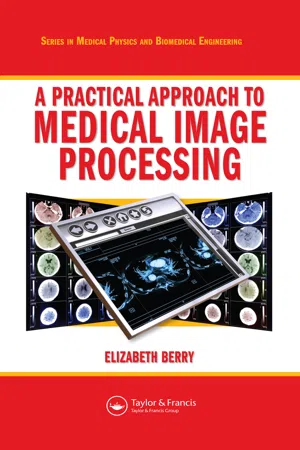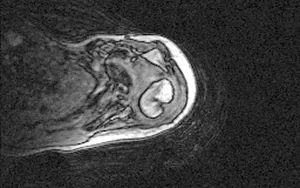
A Practical Approach to Medical Image Processing
Elizabeth Berry
- 304 Seiten
- English
- ePUB (handyfreundlich)
- Über iOS und Android verfügbar
A Practical Approach to Medical Image Processing
Elizabeth Berry
Über dieses Buch
The ability to manipulate and analyze pictorial information to improve medical diagnosis, monitoring, and therapy via imaging is a valuable tool that every professional working in radiography, medical imaging, and medical physics should utilize. However, previous texts on the subject have only approached the subject from a programming or computer science viewpoint at a mathematically inaccessible level. Unlike these previous publications, A Practical Approach to Medical Imaging Processing provides hands-on instruction, using the freely available software program ImageJ, on all of the skills needed to perform filtering and image enhancement techniques used in structured image discrimination.
In this unique text, the author focuses exclusively on image processing and treats medical images in a generic way to highlight the features that all digital images have in common. The book first introduces the main topics in image processing and as it progresses, you will discover relevant points of good practice. The author validates each technique with a corresponding case study, which originates from a published journal article. The case studies demonstrate how the concepts of image processing are applied to real-life situations, such as how to uncover information suffering from distortion and pixel-size limitations. The accompanying downloadable resources contain the Windows version of the ImageJ software, digital images, and documents to be used during the practical activities included in each chapter.
With its highly functional workbook approach, A Practical Approach to Medical Image Processing allows you to build your skills in image manipulation and to enjoy the benefits of this valuable field without having to code or develop your own program.
Häufig gestellte Fragen
Information
1
Image Processing Basics
1.1 Introduction
1.1.1 Learning Objectives
- Define the important basic terms used in image processing
- Understand methods of image enhancement that use the histogram
- List several different measurements, both spatial and grayscale, which can be made from images
- Discuss the five classes of image processing
- Use ImageJ to load and save an image, and perform simple tasks
1.1.2 Example of an Image Used in This Chapter

Image of a shoulder for self-assessment question 1.01.
1.2 Definition of Image Processing
1.2.1 The Digital Image

A digital image is an array of pixels, each of which has a value. (a) A digital image showing the location of a small square region of 15 × 15 pixels. (b) An enlargement of the 15 × 15 region of the image. The numerical values associated with the central pixels are shown overlaid.
1.2.2 Image Resolution
1.2.2.1 Grayscale Resolution

Grayscales associated with images of two different bit depths. (a) An 8-bit grayscale (256 ...
Inhaltsverzeichnis
- Cover
- Half Title
- Series Page
- Title Page
- Copyright Page
- Dedication
- Table of Contents
- Supplementary Resources Disclaimer
- Preface
- Acknowledgments
- On the CD
- 1 Image Processing Basics
- 2 Segmentation and Classification
- 3 Spatial Domain Filtering
- 4 Frequency Domain Filtering
- 5 Image Analysis Operations
- 6 Image Data Formats and Image Compression
- 7 Image Restoration
- 8 Image Registration
- 9 Visualization and 3-D Methods
- 10 Good Practice
- 11 Case Studies
- 12 For Instructors
- Index